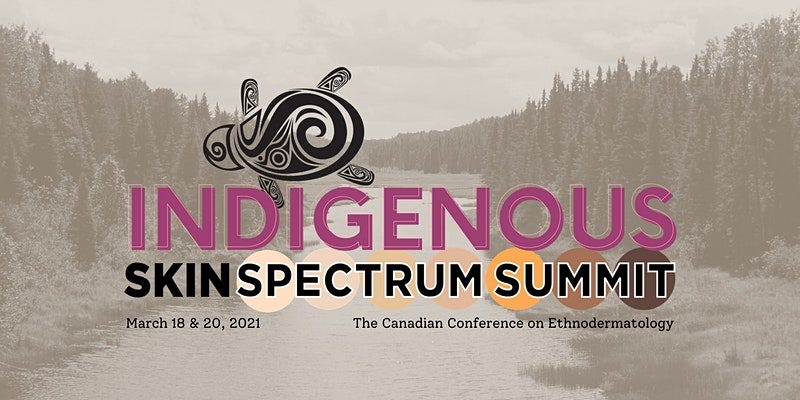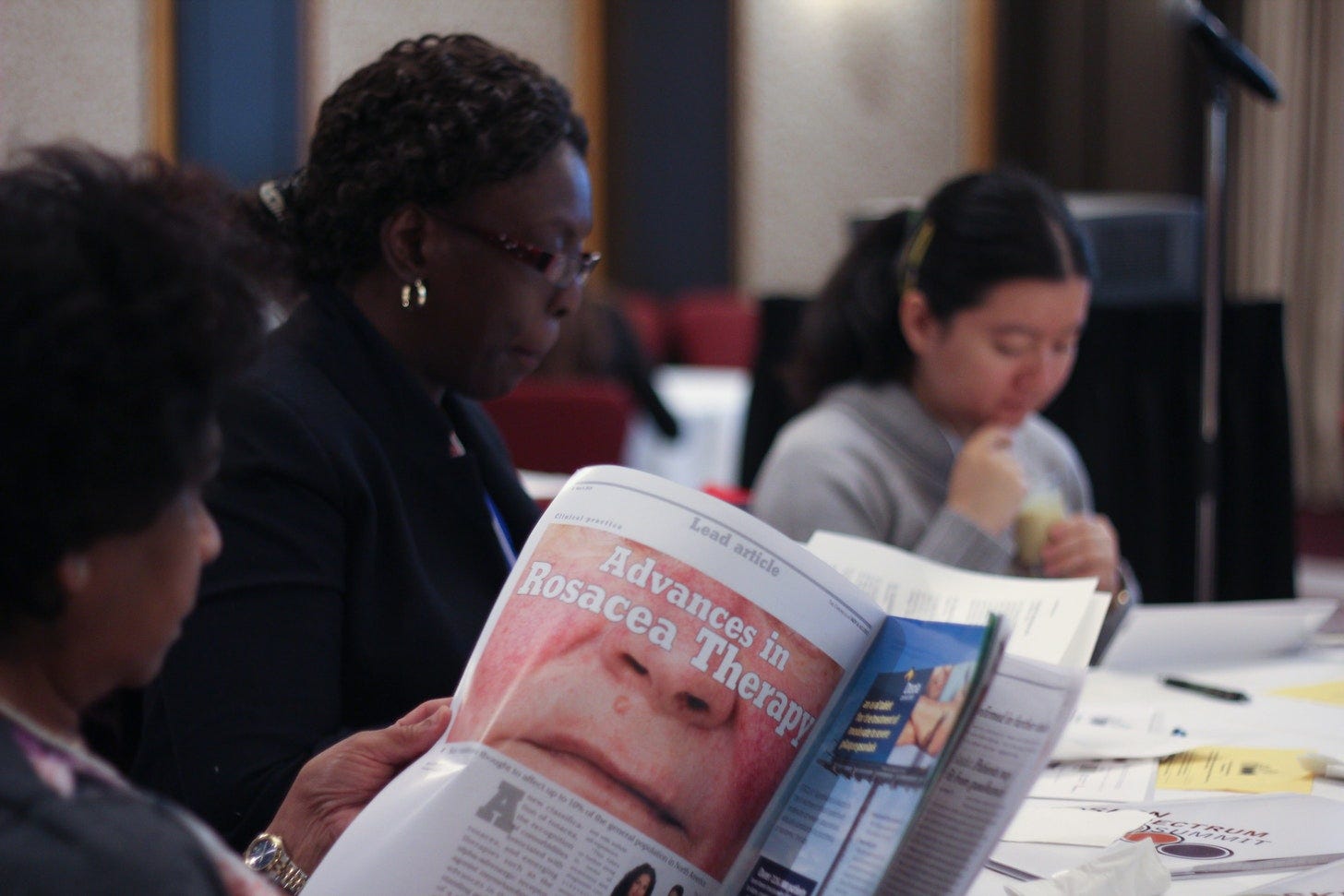'Good, hard treatment' recommended for adult rosacea
Dr. Kevin Pehr says treatment could clear rosacea symptoms for life, but relapse is possible if treatment stops (780 words, 3.2 min)
Skin Spectrum Weekly is proud to announce the first dermatology conference of its kind. The Indigenous Skin Spectrum Summit is a special session of Skin Spectrum Summit held on March 18 and 20, addressing specific treatment needs of Canada's Indigenous community. Click here to learn more and register.
Research has shown that rosacea in people with skin of colour can be easily missed, according to the American Academy of Dermatology. Although there is no lab test to diagnose rosacea, there are several treatment options, according to Dr. Kevin Pehr of Montreal.
“If the patient understands therapy-quality conditions, they’re not expecting a cure,” Dr. Pehr said. “It is chronic. It is not adult acne.”
To begin with, Dr. Pehr recommends asking questions to gain an understanding of what is most worrisome to the patient.
“Ask, ‘What aspect bothers you? Is it the flushing? Is it the broken blood vessels? Is it the itchy feel? Is it the papules and pustules? Is it the eyelids?’ Maybe they all bother the patient, but find out what bothers them the most and focus the treatment on that to start,” he said.
Dr. Pehr recommends spraying oxymetazoline nasal spray on the skin twice a day when treating the nose area. The relatively inexpensive treatment works about a third of the time, according to Dr. Pehr. Additionally, patients can use brimonidine gel, an alpha-2 agonist, applied in the morning and works roughly 80% of the time. The gel lasts about 12 to 13 hours before wearing off.
For erythrotelangiectatic and background erythema, Dr. Pehr suggests laser therapy or intense pulsed light but cautions that this treatment is expensive and is not permanent.
There are various options for treating papules and pustules, including ivermectin, which is expensive but effective. Azelaic acid can be used for treatment and suitable for post-inflammatory hyperpigmentation but can be a little irritating.
Although, in theory, low doses of systemic antibiotics, such as tretinoin or benzoyl peroxide, will work to treat papules and pustules, Dr. Pehr avoids these treatment options because they are irritating for the patient.
With phyma, or bulging nose, Dr. Pehr says isotretinoin may work as a treatment option, but surgery may be required.
Dr. Pehr says patients often won’t think to ask their dermatologist about ocular rosacea.
“Ask them about it,” he said. “The patient will not volunteer. They do not feel it is their business, especially in my case. They say, ‘Well, you’re a skin doctor; this is my eye problem. Why say something to you?’”
The takeaway: Dr. Pehr suggests that with “good, hard treatment,” the patient should see a response within the first two months, but it could take up to six months. Patients must understand that the treatment could clear their rosacea symptoms for the rest of their life and relapse once the treatment stops.
FROM THE LITERATURE ON ROSACEA
A study into minocycline as a treatment for papulopustular rosacea
According to a recent study, for papulopustular rosacea, topical minocycline was found to be a safe and effective treatment. The study evaluated 270 people in the U.S. who applied either 1% minocycline gel, 3% minocycline gel, or a vehicle for 12 weeks.
Rosacea Treatment: Review and Update
A new review looked at recent developments in rosacea treatments, including topicals, oral therapies, direct energy therapies, and more. The researchers also emphasized that large scale clinical research should evaluate the phenotype approach for diagnosis and classification.
The association of photo-induced collagen degeneration and the development of telangiectasias in rosacea
According to a recent study, vessel growth and dilation may be affected by collagen content in the dermal matrix of rosacea patients. The study measured mean collagen content in samples of healthy skin and rosacea samples and found a significantly greater range in rosacea samples.
VIDEO: Caffeine consumption linked to decreased rosacea symptoms
AT THE INTERSECTION OF SKIN AND SOCIETY
The only successful coup to ever take place on American soil happened in 1898 and was conducted by white supremacists in Wilmington, North Carolina, according to a short audio news story by (U.S.) National Public Radio titled Race and the Capitol Riot: An American Story We’ve Heard Before. In the 13-minute audio story, NPR’s Audie Cornish talks to Keenga-Yamahtta Taylor, professor of African American Studies at Princeton, about the comparisons that can be made to the violent attack on the U.S. Capitol that happened on Jan. 6. Listen to the full story here.
This Week
Wednesday, Jan. 20 Racism and Obesity Bias in Medicine, Similarities and Challenges presented by University of Toronto Faculty of Medicine
Friday, Jan. 22 Basic Botulinum Toxin: Aesthetic Upper Face & Therapeutic Pain Management
Something to think about during the week ahead…
Next Week
Dr. Sunil Kalia discusses three basic sun protection methods for all skin types.
Thank you to our panellists and delegates for making Skin Spectrum Summit 2020 a great success. Conference highlights will soon be posted to the Skin Spectrum website. As always, we welcome your questions and comments on topics in Ethnodermatology.








